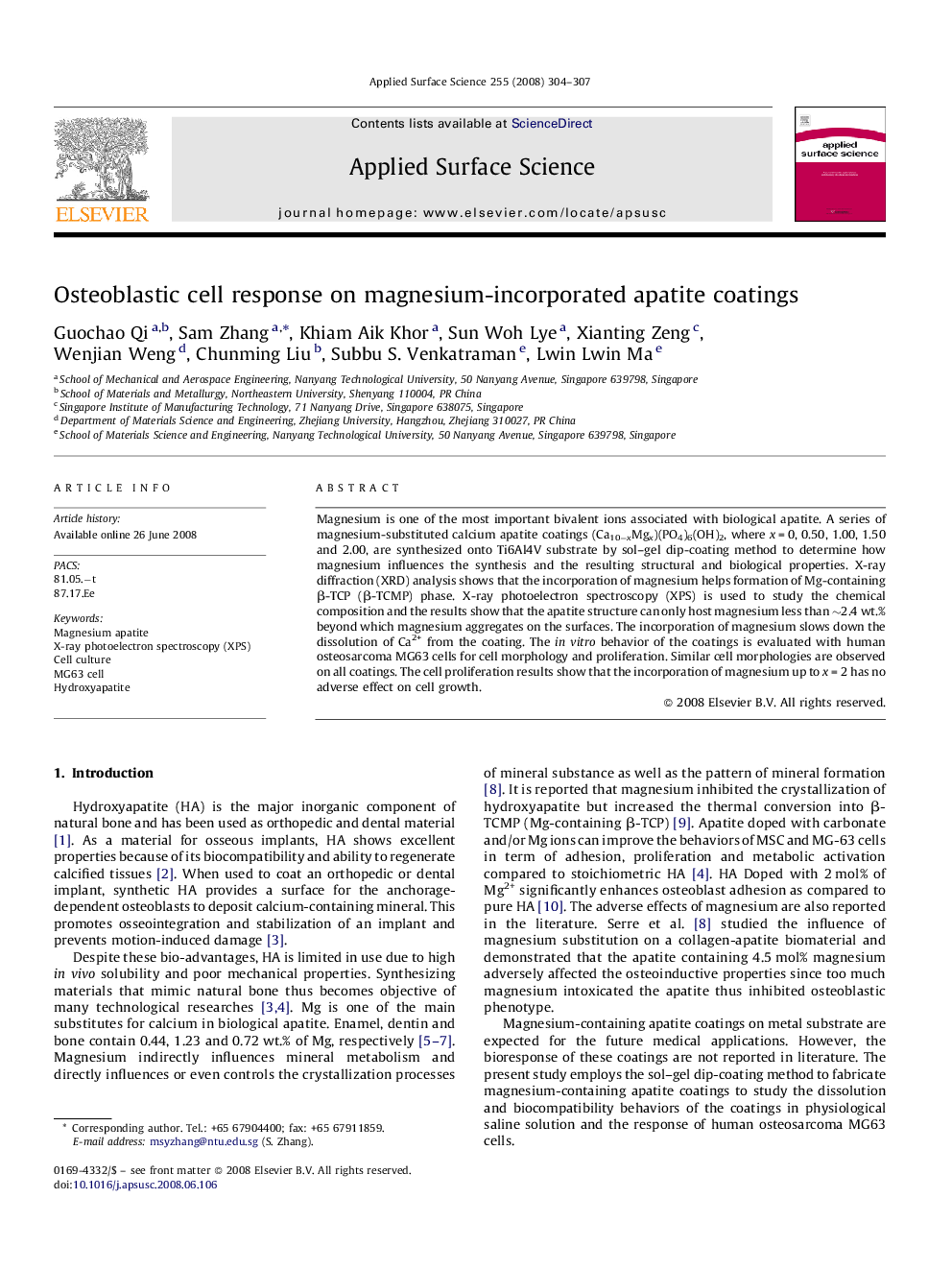| Article ID | Journal | Published Year | Pages | File Type |
|---|---|---|---|---|
| 5365062 | Applied Surface Science | 2008 | 4 Pages |
Abstract
Magnesium is one of the most important bivalent ions associated with biological apatite. A series of magnesium-substituted calcium apatite coatings (Ca10âxMgx)(PO4)6(OH)2, where x = 0, 0.50, 1.00, 1.50 and 2.00, are synthesized onto Ti6Al4V substrate by sol-gel dip-coating method to determine how magnesium influences the synthesis and the resulting structural and biological properties. X-ray diffraction (XRD) analysis shows that the incorporation of magnesium helps formation of Mg-containing β-TCP (β-TCMP) phase. X-ray photoelectron spectroscopy (XPS) is used to study the chemical composition and the results show that the apatite structure can only host magnesium less than â¼2.4 wt.% beyond which magnesium aggregates on the surfaces. The incorporation of magnesium slows down the dissolution of Ca2+ from the coating. The in vitro behavior of the coatings is evaluated with human osteosarcoma MG63 cells for cell morphology and proliferation. Similar cell morphologies are observed on all coatings. The cell proliferation results show that the incorporation of magnesium up to x = 2 has no adverse effect on cell growth.
Related Topics
Physical Sciences and Engineering
Chemistry
Physical and Theoretical Chemistry
Authors
Guochao Qi, Sam Zhang, Khiam Aik Khor, Sun Woh Lye, Xianting Zeng, Wenjian Weng, Chunming Liu, Subbu S. Venkatraman, Lwin Lwin Ma,
